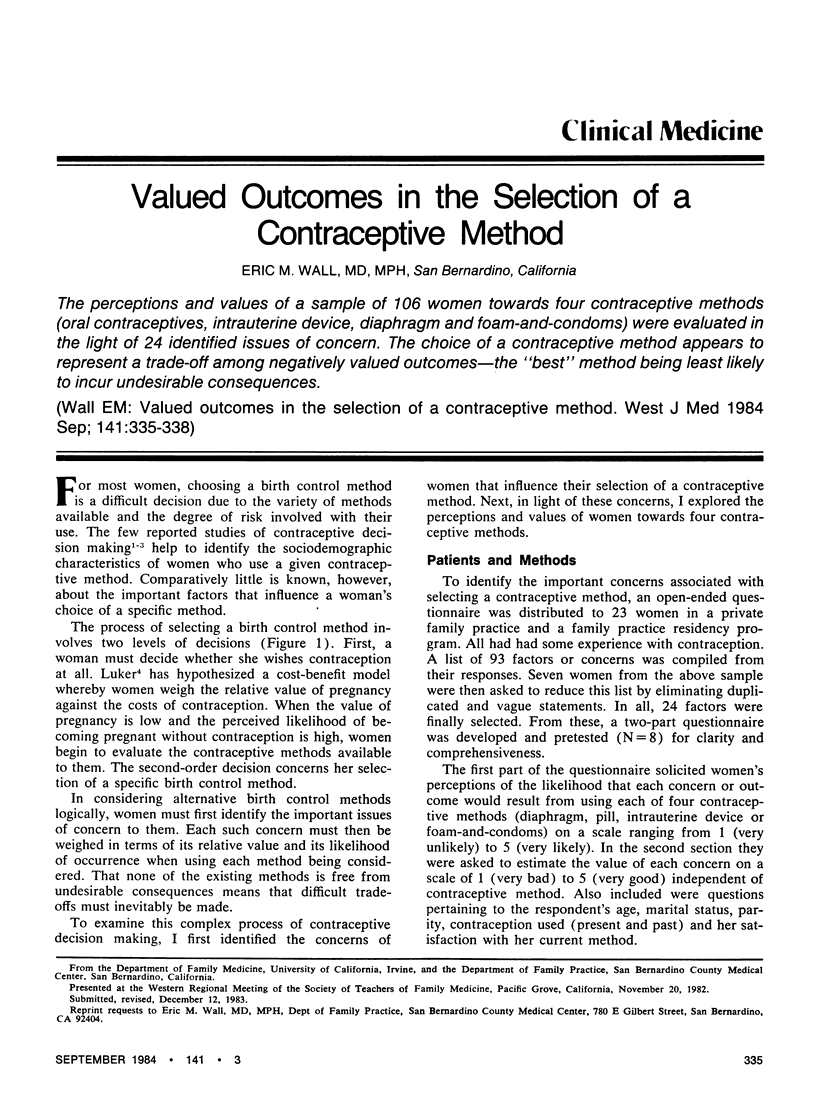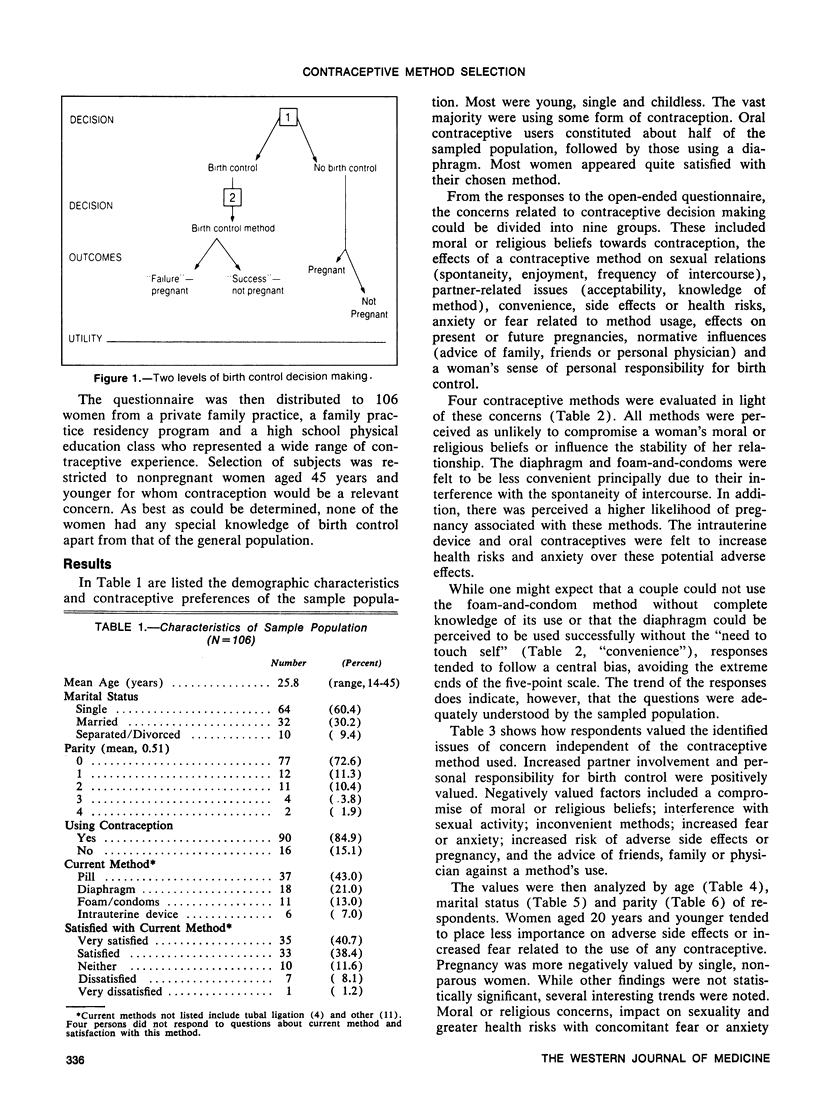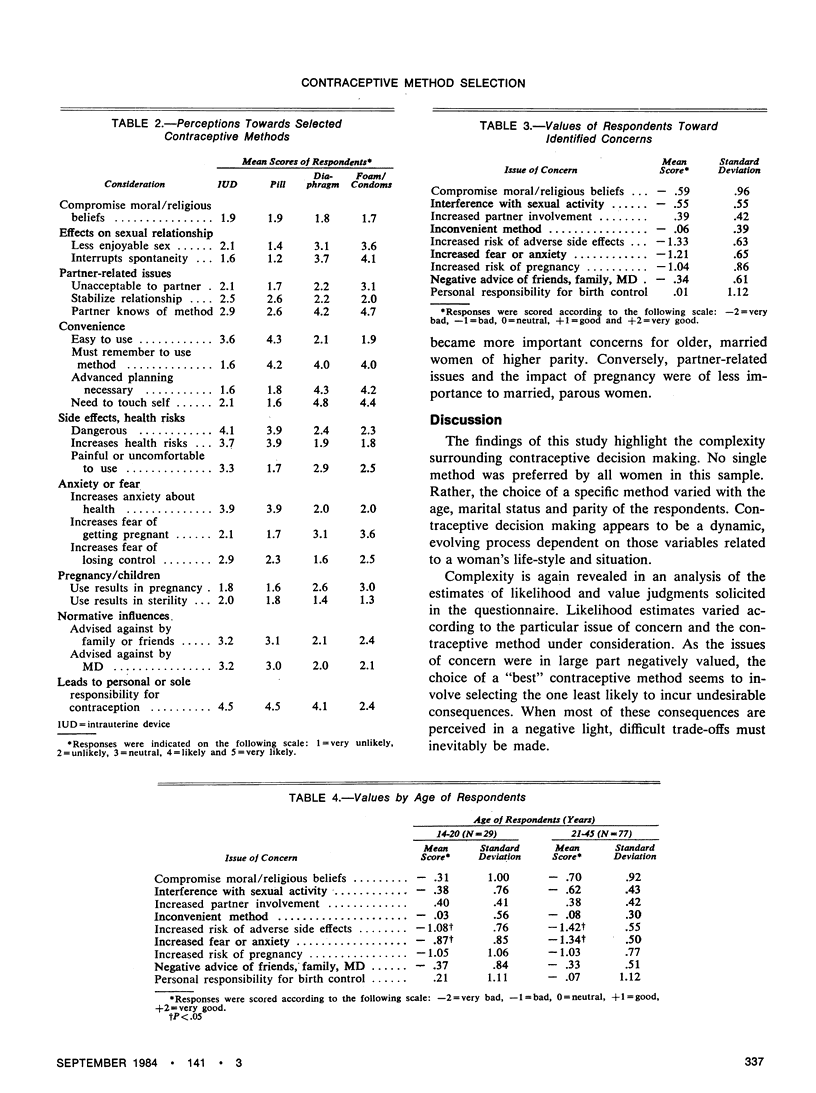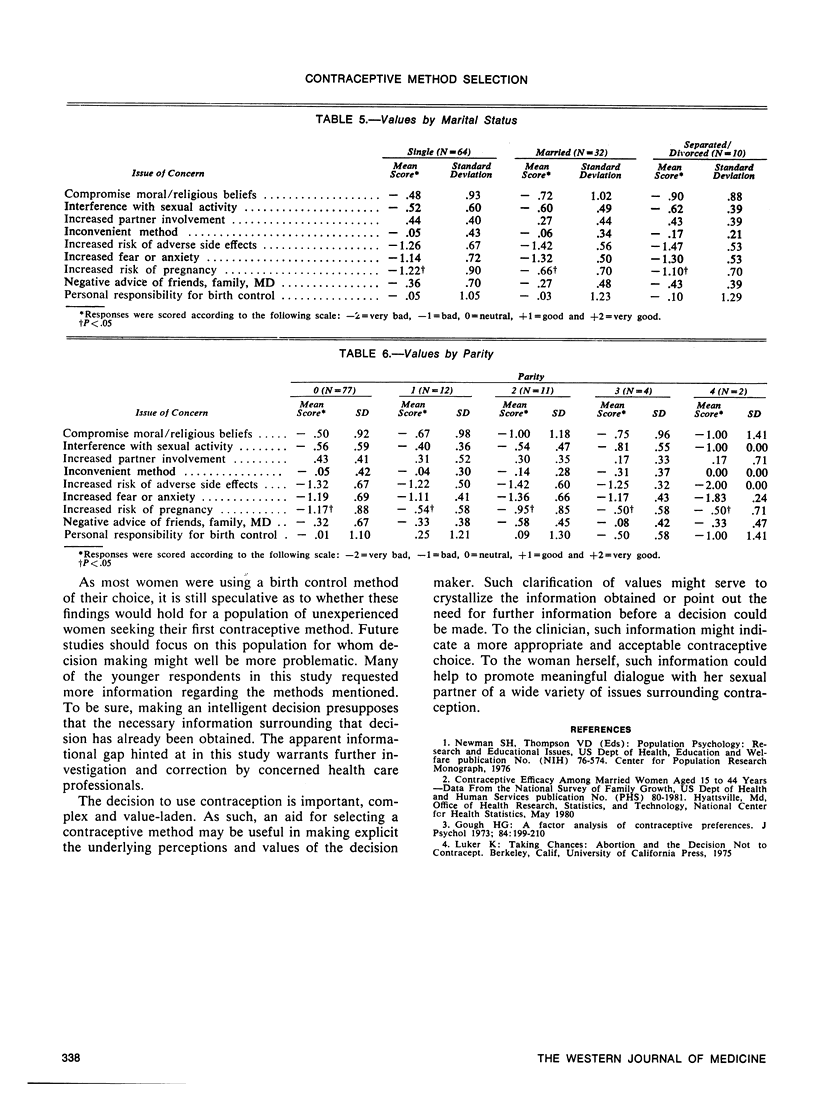Abstract
The perceptions and values of a sample of 106 women towards four contraceptive methods (oral contraceptives, intrauterine device, diaphragm and foam-and-condoms) were evaluated in the light of 24 identified issues of concern. The choice of a contraceptive method appears to represent a trade-off among negatively valued outcomes—the “best” method being least likely to incur undesirable consequences.
Full text
PDF



Selected References
These references are in PubMed. This may not be the complete list of references from this article.
- Gough H. G. A factor analysis of contraceptive preferences. J Psychol. 1973 Jul;84(2D):199–210. doi: 10.1080/00223980.1973.9923830. [DOI] [PubMed] [Google Scholar]


